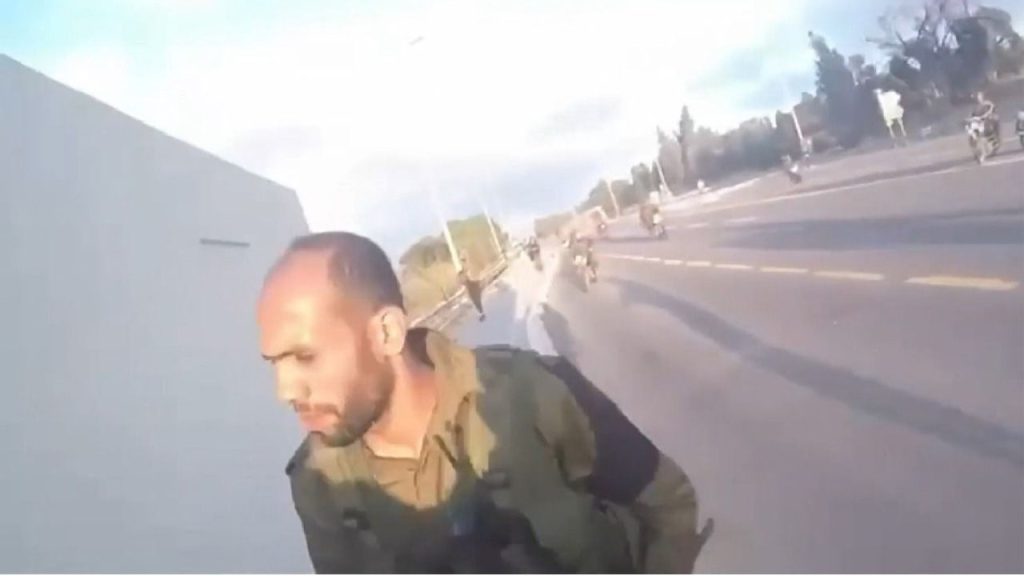The Israel Defense Force (IDF), in a joint operation with the Israeli Security Agency (ISA), has eliminated Abd al-Hadi Sabah, a high-ranking Hamas commander implicated in the brutal assault on Kibbutz Nir Oz on October 7th. Sabah, identified as a key orchestrator of the incursion that devastated the community near the Gaza border, met his demise in a targeted drone strike on Tuesday in the Western Khan Yunis Battalion. The precision strike, based on meticulous intelligence gathering, was executed while Sabah was concealed within a shelter located within a designated humanitarian zone in Khan Yunis, southern Gaza. This location adds a layer of complexity to the operation, raising questions about the use of humanitarian zones by militant leaders.
The IDF and ISA underscored Sabah’s prominent role in the Nir Oz attack, highlighting his involvement in the slaughter and abduction of nearly half of the kibbutz’s 400 residents. Beyond the Nir Oz massacre, Sabah was identified as a leading figure in numerous other terrorist attacks against Israeli forces, solidifying his position as a high-value target. The joint statement issued by the IDF and ISA emphasized their unwavering commitment to pursuing and neutralizing all individuals involved in the October 7th atrocities, signaling a sustained campaign against Hamas leadership.
The operation to eliminate Sabah was carefully planned and executed to minimize civilian casualties. The IDF emphasized its adherence to strict protocols, utilizing precise munitions and leveraging both intelligence assets and aerial surveillance to mitigate the risk to non-combatants. This careful approach underscores the complexities of conducting military operations in densely populated areas, particularly within designated humanitarian zones. The strike serves as a testament to the ongoing efforts by Israeli security forces to balance the imperative of counterterrorism with the imperative of protecting innocent lives.
The targeted killing of Sabah represents a significant blow to Hamas’ operational capabilities. His leadership role in planning and executing the Nir Oz attack, coupled with his involvement in previous terrorist activities, marks him as a critical figure within the organization’s hierarchy. Removing such a key operative disrupts the chain of command, weakens planning capacity, and potentially demoralizes lower-ranking members. However, the operation also carries the risk of further escalating tensions in the region and potentially prompting retaliatory actions from Hamas.
The aftermath of the strike is likely to be marked by heightened vigilance and increased security measures by Israeli forces. Hamas’ response to the targeted killing of one of its top commanders remains uncertain, but history suggests the possibility of retaliatory rocket fire or other forms of attack. The precarious security situation underscores the ongoing challenges faced by Israel in its efforts to protect its borders and citizens against militant threats. The international community will likely call for de-escalation and a return to dialogue, while Israel maintains its right to defend itself against terrorism.
The long-term implications of this targeted killing will depend on various factors, including Hamas’ internal dynamics, regional geopolitical developments, and the broader Israeli-Palestinian conflict. While the elimination of Sabah may temporarily disrupt Hamas operations, the underlying causes of the conflict remain unresolved. The incident serves as a grim reminder of the volatile security environment in the region and the complex challenges facing both sides in their pursuit of peace and security. The international community’s role in mediating a resolution to the conflict remains crucial, with continued emphasis on de-escalation and a commitment to finding a sustainable path towards peace.

